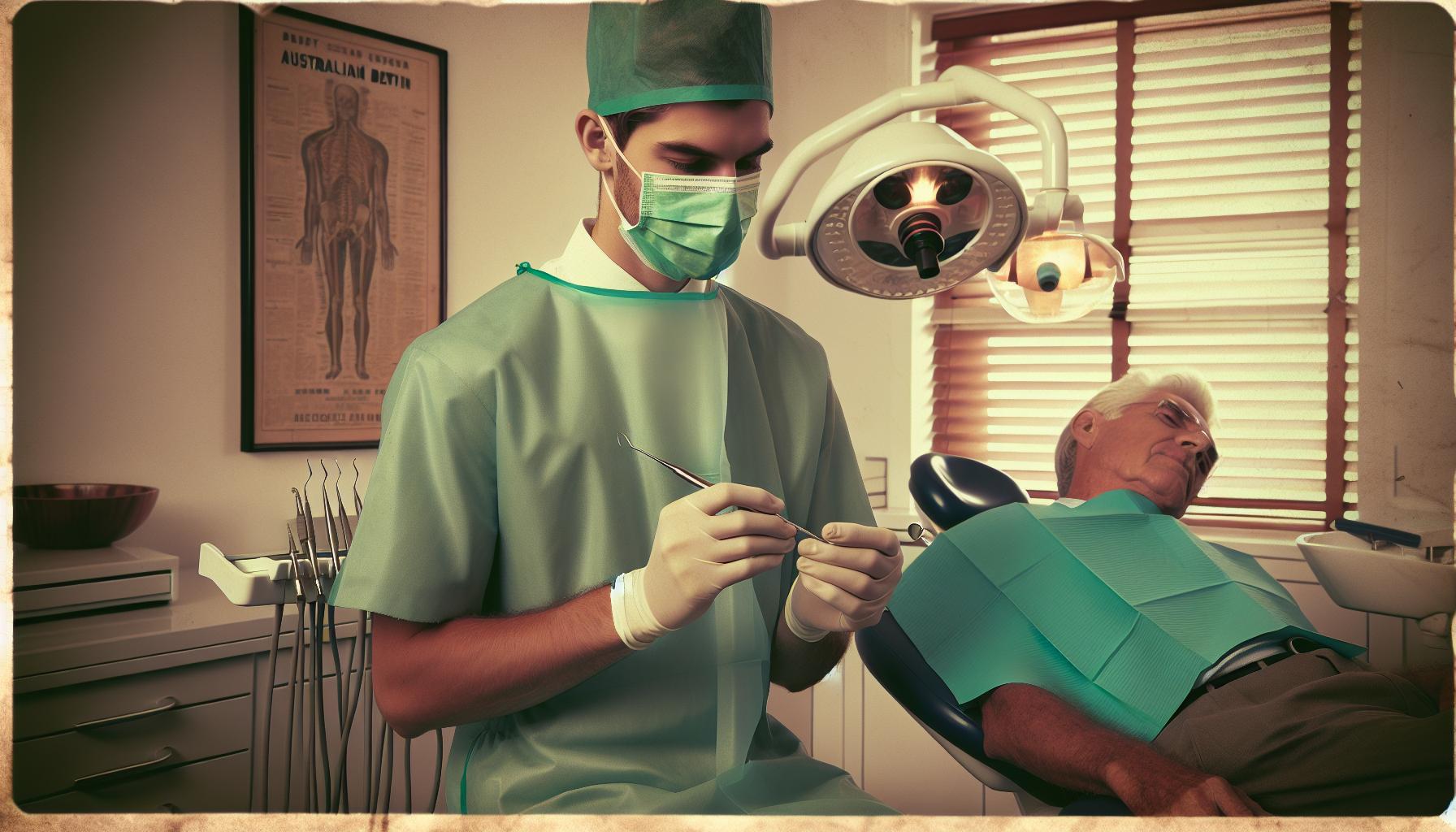Dental procedures can often spark anxiety, especially when it comes to something like a bone graft. Many wonder if sedation is necessary for this treatment and what to expect during the process. Understanding the sedation options available not only eases concerns but also helps patients make informed decisions about their dental health.
Overview of Dental Bone Grafting
Dental bone grafting is a surgical procedure used to restore bone lost due to trauma, disease, or tooth loss. It involves placing a bone graft material in the jawbone, promoting new bone formation and providing support for dental implants or prosthetics.
Different types of graft materials exist:
- Autografts: Bone collected from the patient’s own body, often from the jaw or hip, ensuring compatibility and minimising rejection risk.
- Allografts: Bone sourced from a human donor, processed and sterilised to eliminate disease transmission.
- Xenografts: Bone obtained from animals, typically cows, processed to make it safe for human use.
- Synthetic grafts: Man-made materials designed to mimic natural bone.
The procedure typically occurs under local anaesthetic, sedation, or general anaesthetic, depending on the patient’s anxiety level and the complexity of the surgery. Understanding sedation options helps patients reduce anxiety and enhance comfort during the dental procedure.
For those who experience significant dental anxiety, Sleep Dentistry Brisbane specialises in providing tailored sedation options to ensure a stress-free experience.
Benefits of dental bone grafting include:
- Improved jawbone density and structure
- Enhanced stability for dental implants
- Increased chances of successful implant placement
Recovery after a dental bone graft varies based on several factors, including the procedure’s complexity and the patient’s overall health. Patients may experience swelling or discomfort, managed with prescribed medications and adherence to follow-up care.
Being informed about dental bone grafting procedures ensures patients actively participate in their oral health decisions while alleviating concerns surrounding treatment.
Understanding Anesthesia Options

Anxiety surrounding dental procedures influences many patients’ comfort levels. Knowing the available anaesthesia options helps alleviate concerns regarding dental bone grafting.
Local Anaesthesia
Local anaesthesia involves numbing the specific area where the dental procedure occurs. The dentist injects a local anaesthetic, such as lidocaine, to block nerve sensations in the targeted region. This option is commonly used for dental bone grafts as it allows patients to remain awake and alert during the surgery while minimising discomfort. The effects usually last for several hours, ensuring a painless procedure.
Sedation
Sedation offers a deeper level of relaxation for patients who experience heightened anxiety. Options include nitrous oxide (“laughing gas”), oral sedatives, or intravenous (IV) sedation, depending on the patient’s needs. Nitrous oxide induces a calm feeling while maintaining consciousness, allowing patients to communicate with the dentist. Oral sedatives provide a longer-lasting effect, making appointments feel more manageable. IV sedation delivers effective relaxation and can adjust dosages based on individual comfort with minimal awareness of the procedure. Each sedation method presents its advantages and suitability based on anxiety levels and procedure complexity.
Are You Put to Sleep for a Dental Bone Graft?
Dental bone grafts may require different types of anaesthesia, depending on patient needs and surgery complexity.
Factors Influencing Anaesthesia Choice
Anaesthesia choices for dental bone grafts rely on multiple factors:
- Anxiety Levels: Higher anxiety often leads to a preference for sedation or general anaesthesia.
- Complexity of Procedure: More complex surgeries typically require deeper sedation or general anaesthesia for optimal comfort.
- Patient Health: Existing medical conditions can influence the anaesthesia type. Those with certain respiratory or cardiovascular issues should consider specific options.
- Duration of Procedure: Longer procedures may warrant stronger anaesthesia to enhance comfort.
- Surgeon’s Recommendations: Oral surgeons often evaluate individual cases to recommend the most suitable anaesthesia option.
Patient Experience and Feedback
Patient experiences with dental bone graft anaesthesia vary widely, depending on the method used:
- Local Anaesthetic: Many patients report minimal discomfort and feel reassured by being awake and aware during their surgery.
- Sedation Options: Nitrous oxide users frequently express satisfaction with the calming effects, while IV sedation patients often enjoy a more restful experience, recalling little of the procedure.
- General Anaesthesia: Those who undergo general anaesthesia typically appreciate the unconscious state, though they may experience grogginess post-procedure.
- Post-Procedure Comfort: Feedback indicates that effective pain management methods, along with anaesthesia type, significantly impact recovery satisfaction.
Patients should discuss their concerns and preferences with their surgeon to choose the anaesthesia method that best suits their needs and increases comfort during the dental bone graft procedure.
The Procedure of Dental Bone Grafting
Dental bone grafting involves several steps that vary based on the specific type of graft material used and the complexity of the individual case.
- Preparation: The surgeon assesses the patient’s dental and medical history to determine the most effective approach to the graft. They may recommend imaging studies, such as X-rays or CT scans, to evaluate the jawbone’s condition.
- Anaesthesia Administration: Depending on the patient’s needs and anxiety levels, anaesthesia options include local anaesthetic, sedation, or general anaesthetic. Local anaesthetic numbs the surgical area, allowing patients to stay awake. Nitrous oxide and IV sedation provide varying levels of relaxation for patients with anxiety. General anaesthesia induces unconsciousness, making the patient unaware of the procedure.
- Graft Placement: The surgeon makes an incision in the gum to access the jawbone. After preparing the site, the chosen graft material is placed in the area where bone density is insufficient. The graft can be autograft, allograft, xenograft, or synthetic material, selected based on compatibility and patient needs.
- Closure: Once the graft is securely placed, the surgeon stitches the incision to promote healing.
- Recovery Instructions: Post-operative care includes guidance on managing discomfort and swelling, often through prescribed medications. Follow-up appointments ensure proper healing and monitor the success of the graft.
Dental bone grafting enhances jawbone density and structure, providing improved support for dental implants. Awareness of the procedure’s steps and anaesthesia options enables patients to make informed choices regarding their dental treatments.
Recovery and Aftercare
Recovery after a dental bone graft is crucial for successful healing. Patients typically experience mild discomfort, swelling, or bruising in the treatment area. Swelling often peaks within 48 hours post-surgery and usually subsides within a week. Pain management can involve over-the-counter medications, however, stronger prescription options may be provided for more intense discomfort.
Dental professionals recommend adhering to specific aftercare instructions:
- Follow Dietary Guidelines: Soft foods are recommended for the first week. Avoid hard, chewy, or spicy foods which may irritate the surgical site.
- Maintain Oral Hygiene: Gentle brushing of the teeth is essential, avoiding the graft area for the first few days. Rinse with a saline solution to support healing.
- Avoid Strenuous Activity: Rest is critical during the initial recovery phase. Avoid heavy lifting or intense exercise for at least a few days.
- Use Ice Packs: Applying ice packs to the affected area for 15-minute intervals can help reduce swelling and discomfort.
- Attend Follow-Up Appointments: Regular check-ins with a dental professional ensure proper healing and address any complications, if they arise.
Patients may note that it’s normal for slight bleeding to occur within the first 24 hours. If bleeding persists or worsens, contacting the dental office promptly is advisable. Healing generally takes several months, depending on individual health factors and the complexity of the graft.
Compliance with these recovery measures is essential for optimal healing and successful integration of the graft.
Conclusion
Understanding the sedation options available for dental bone grafts can significantly ease patient anxiety. By knowing what to expect during the procedure and the various anaesthesia methods, individuals can approach their dental care with greater confidence.
It’s essential for patients to communicate openly with their dental surgeon about their concerns and preferences. This collaboration ensures the chosen anaesthesia method aligns with their needs and the complexity of the surgery.
Ultimately, informed patients are better equipped to navigate their dental health journey, leading to a more comfortable and successful experience with bone grafting.
Frequently Asked Questions
What is dental bone grafting?
Dental bone grafting is a surgical procedure that restores lost bone in the jaw due to trauma, disease, or tooth loss. It supports the jaw structure and enhances stability for dental implants.
What types of graft materials are used in dental bone grafting?
The types of graft materials include autografts (from the patient), allografts (from a donor), xenografts (from another species), and synthetic grafts (lab-created). Each has unique benefits and compatibility considerations.
How is sedation managed during dental bone grafts?
Sedation options for dental bone grafts include local anaesthesia, nitrous oxide, oral sedatives, and intravenous sedation. The choice depends on the patient’s anxiety level, procedural complexity, and individual preferences.
What are the recovery expectations after a dental bone graft?
Recovery typically involves mild discomfort, swelling, and bruising, peaking within 48 hours. Following prescribed post-operative care, including pain management and rest, is crucial for optimal healing.
How long does the dental bone graft procedure take?
The duration of a dental bone graft procedure varies based on factors like the complexity of the surgery and the type of graft used. Generally, it may take from one hour to several hours.
What should I do if I experience bleeding after my graft?
Some slight bleeding is normal within the first 24 hours post-surgery. However, if bleeding persists, contact your dental office promptly for advice and intervention.
Why is it important to discuss anaesthesia options with the surgeon?
Discussing anaesthesia options helps ensure the selected method aligns with your comfort levels, anxiety, and the procedure’s complexity, ultimately enhancing your experience during the surgery.
